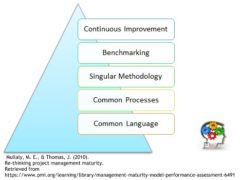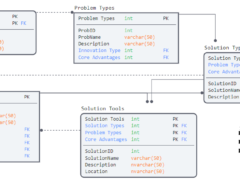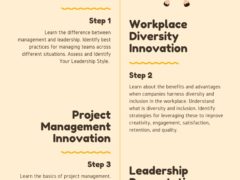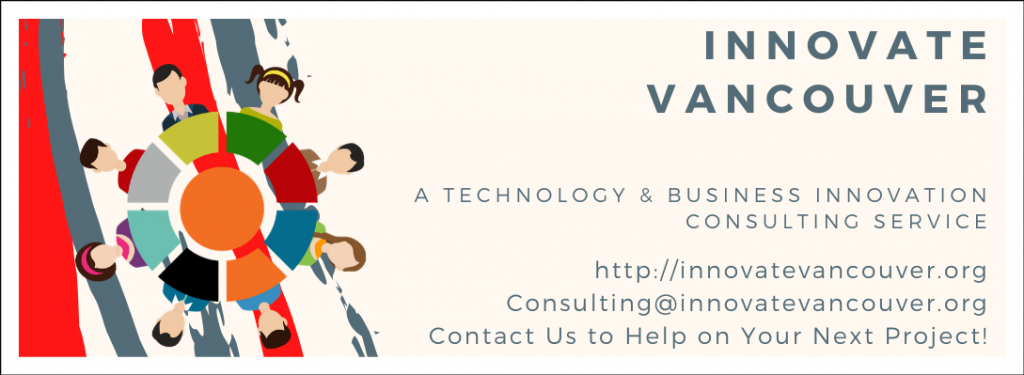Contract management begins with understanding the scope of work. It starts by identifying the deliverables required. Next, you determine the problem that is going to be solved. Finally, assess the company’s capacity to deliver the contract’s specifications.

Delivery is evaluated internally and externally. The evaluation depends on the contract type and the source of resources, personnel, tools, and technology. Internal constraints will continue to impact the project despite bringing in a subject matter expert.
Contract requirements often include specifications to use a project management methodology. This methodology (or framework) provides a useful model for evaluating the company’s readiness or capacity to support a project’s delivery.
Evaluating company capability to deliver includes consideration of the following process groups (PMBOK):
| Initiation: | Does the project have buy-in? Support? Resources? Tools? |
| Planning: | Are internal stakeholders available? Accountable? Experienced? |
| Execution: | Are workstream owners/ members engaged? Trained? Accountable? Are they in agreement with their role & responsibilities? |
| Monitoring & Controlling: | Are key performance indicators prioritized? Is data available? Is the process of evaluation clear & consistent? Is working group/ committee membership consistent? |
| Closeout: | Are stakeholders in agreement on what problem is being solved? What the solution should look like? How it should perform? How to use it? |
Evaluating the company context, particularly on the client side, can be challenging.

Most of these questions have been confirmed with experience. This leaves the contractor trying to discern the company’s capacity to internally deliver project requirements. This is true even with the assistance of an external contractor. If the client company is unable to integrate the delivered project (or solution) its value remains
unrealized. Project managers and contractors are often held responsible despite setting out clear guidelines, schedules, and processes to deliver the specifications.
In the case of process-based solutions, the risk of poor integration is heightened.
Evaluating company capacity to deliver (and integration) project solutions across the business model takes into consideration the following:
| Tools/ Technologies | Are the tools needed to deliver the solution available to the team? Or is the team required to deliver with outdated and poor performing tools? |
| Systems | Is the approach to work aligned? |
| Processes | Are the processes in place streamlined, consistent, and value-adding (essential)? |
| Data | Is data available to evaluate key performance indicators? Project performance? Health? Inform critical decisions? |
| Training | Is training available? Is it ‘one size fits all’ or tailored to different performance groups? Is it evaluated? |
| Roles/ Job Descriptions | Do job descriptions include the requisite responsibilities? Is feedback provided regularly? Is the JD updated regularly to match changing performance requirements? |
| Policies & Procedures | Is the work process standardized? Based on evidence-based practices? Updated regularly? Inform training? Evaluation? Align with project specifications? |
The business model is a framework developed by Alexander Osterwalder (20103). It helps businesses identify, evaluate, and strengthen the core pillars. These pillars drive performance. This framework can also be used to evaluate a company’s capacity to integrate solutions by considering the following questions:
| Key Partners | Who are the company’s key partners? Will they be using the solution? |
| Key Activities | What are the company’s key activities? How will these interface with the solution? |
| Key Resources | What are the company’s key resources? How will these be used to build/implement the solution? |
| Value Proposition | What is the company’s value proposition (VP)? Competitive advantage? How does the solution relate to the VP? Does it strengthen or diversify? Does it solve existing or new problems? |
| Customer Relationships | How is the company strengthening their relationships with its customers? How does this solution impact these relationships? How is this evaluated? |
| Channels | What channels are available to the company? What channels are needed by this solution? How will this be supported? |
| Customer Segments | What customer groups are served by the company? How does this solution relate? New or existing customer groups? How do they evaluate solutions? How do competitor offerings compare? |
| Cost Structure | What is the company’s current cost structure? Will this solution leverage existing assets or require purchasing new ones? |
| Revenue Streams | What revenue streams are currently leveraged by the company? Will these have access to the solution delivered? Or will new channels need to be developed? |
Contract (and project) risks are both internal & external. This requires an analysis of the:
- Solution Specifications: Do the specifications deliver the value intended?

- Project Team: Is this the right team for this solution? Are all the necessary resources and tools available?
- Corporate Environment: Is the corporate environment able to integrate the project delivery solution (and structure) into its business model?
As a contractor, delivering a successful project involves more than just completing on time. It requires being on schedule, within budget, and per specifications. It involves delivering a solution that is valued by the customer. The solution must also be easily leveraged. It should be integrated and deployed by the company’s business model.
Project Bids
RFP Proposals
Contract Mgt.
Contract specifications need to be evaluated carefully for risk. Without these proper precautions, the consultant risks under delivering on a project. They might also deliver a solution that no one wants or is unable to use. The business model framework can help evaluate the project environment. Project management methodology (and process groups) also contributes to this evaluation. Additionally, the project management maturity model (graphic) assesses the capacity to deliver and utilize the solution(s) provided.
How is your team evaluating whether a contract has the requisite foundation to succeed? Share your comments below.
Supporting a capacity development project?
Additional Read
Travis Barker, MPA GCPM
Innovate Vancouver
Innovate Vancouver is a Technology and Business Innovation Consulting Service located in Vancouver, BC. Contact Innovate Vancouver to help with your new project. Innovate Vancouver also gives back to the community through business consulting services. Contact us for more details.
Resource:
Mullaly, M. E., & Thomas, J. (2010). Re-thinking project management maturity. Retrieved from https://www.pmi.org/learning/library/management-maturity-model-performance-assessment-6491
Osterwalder, A., & Pigneur, Y. (2013). Business model generation a handbook for visionaries, game changers, and challengers. New York: Wiley & Sons.





